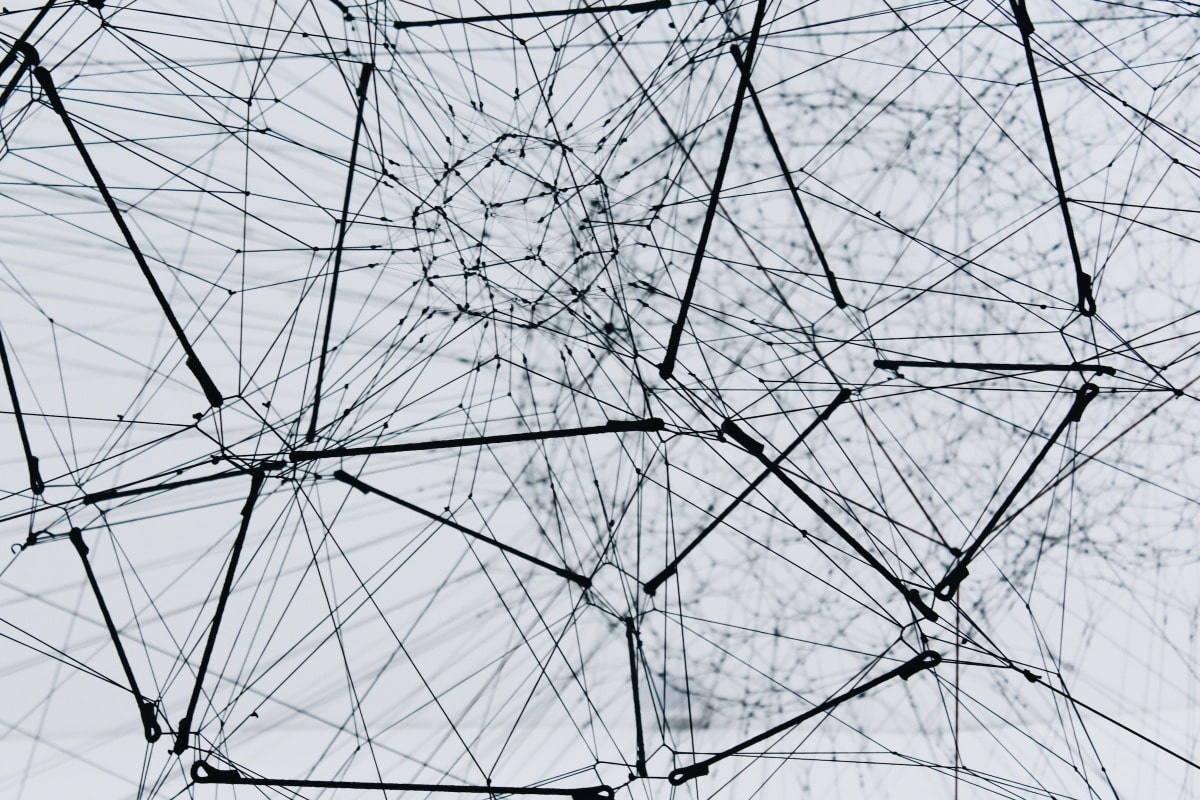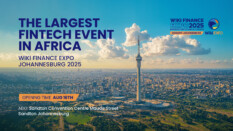Exploring Web3 may feel like it’s 1991 again, and HTMLs, URLs and static pages have only just ushered users in the Web1. In reality, accepting confusion is the first step to learning, and bypassing the threshold into unknown territory. In 2023, we have all the tools for getting started with Web3 and embracing everything the decentralized web has to offer.

Many remain skeptical about the potential of Web3, but various solutions which are a product of the decentralized web are already here and already making a difference.
Source: Unsplash
Web3, the decentralized web or the blockchain web, is the totality of efforts to create a new internet infrastructure that is not controlled by a few large corporations or governments, but instead is built on decentralized networks powered by blockchain technology.
Why is Web3 important?
Web3 has all the potential to address core challenges of the current web, such as:
Lack of Privacy: Web3 aims to give users back control over their data and personal information, ensuring that it is kept private and secure, and not sold to third-party advertisers.
Centralization of Power: The current web is dominated by a few large tech companies, which have a significant amount of control over how information is distributed and who has access to it. Web3 aims to create a more level playing field by decentralizing power and enabling a more diverse group of actors to participate.
Interoperability: Web3 aims to create an ecosystem where different applications and services can work together seamlessly, regardless of the underlying technology they use.
Censorship-resistance: Web3 makes it difficult for governments or corporations to censor or control the content that is available online.
By creating a new web that is more secure, private, and decentralized, Web3 has the potential to unlock new possibilities for commerce, communication, and creativity, and to provide a more democratic and open platform for innovation and growth.
To understand the direction of the new web and its many branches, it’s paramount to know the projects developing some of the most important solutions.
The outstanding projects developing Web3
1. Cardstack
Cardstack is a decentralized application (dApp) platform that enables developers to build and deploy dApps that can interact with multiple blockchain networks and conventional web services. The platform aims to simplify the process of building dApps by providing a set of tools and services that make it easier for developers to create and manage complex, multi-blockchain applications.
Cardstack features:
User Experience: the project prioritizes user experience and aims to provide a seamless and intuitive interface for interacting with decentralized applications. This is a critical aspect of Web3, as the goal is to make blockchain technology accessible and usable for a wide range of users.
Interoperability: Cardstack is designed to work seamlessly with multiple blockchain networks and conventional web services, enabling developers to build applications that can interact with a wide range of technologies. This is important for Web3, as it aims to create an ecosystem of interconnected applications and services that can work together with ease.
Decentralization: Cardstack is built on a decentralized architecture, which means that there is no central authority controlling the platform or the applications that are built on it. This aligns with the core principles of Web3, which aims to create a more democratic and open platform for innovation and growth.
Scalability: Cardstack provides a scalable platform for building decentralized applications, which is critical for the success of Web3. By overcoming scalability limitations, Cardstack has the potential to unlock new possibilities for decentralized applications and to make blockchain technology accessible to a wider range of users.
2. Cartesi
Cartesi is a Web3 project that offers a unique solution to the scalability problem in the blockchain industry by using off-chain computations. This approach allows for high-performance dApps that are still secure and decentralized.
Cartesi’s Linux environment provides developers with a familiar and versatile platform for building dApps. This makes it easier for developers to build complex decentralized applications and increases the overall accessibility of blockchain technology to a wider range of developers.
Cartesi features:
Off-chain Computation: Cartesi’s unique approach to scalability allows for high-performance dApps by utilizing off-chain computations.
Decentralized File System: Cartesi includes a decentralized file system (CDFS) that allows for secure and efficient storage and retrieval of large data files.
Stateless Dapps: Cartesi’s infrastructure supports stateless dApps, which allows for lower storage costs and improved scalability.
Verifiable Computations: Cartesi uses verifiable computations to ensure the correctness of off-chain computations and to provide transparency to users.
3. Hydranet
Hydranet is a decentralized exchange (DEX) that aims to provide instant, trustless, and secure order-book trading between different blockchains. As a Layer 3 solution, Hydranet operates on top of existing blockchains and provides a decentralized marketplace for trading native tokens between different networks.
Hydranet features:
Interoperability: Hydranet enables cross-chain trading of native tokens, which is an important aspect of Web3. The platform supports the exchange of tokens between different blockchain networks, which makes it easier for users to trade and exchange digital assets in a decentralized and secure manner.
Decentralization: Hydranet is a decentralized exchange, which means that there is no central authority controlling the platform or the trades that take place on it. Decentralization also ensures security, transparency, and resistance to censorship.
Security: Hydranet’s focus on security is an important aspect of its appeal as a Web3 project. The platform’s decentralized architecture and use of cryptographic protocols ensure that trades are secure and that users retain control over their assets at all times.
Scalability: Hydranet’s layer 3 solution allows it to overcome the scalability limitations that have historically limited the performance and capacity of decentralized exchanges. This is important for Web3, as scalability is a key factor in the success of decentralized systems and applications.
4. Ocean Protocol
Ocean Protocol is a decentralized data exchange protocol that enables secure and private sharing of data while preserving control and ownership over it. The protocol allows individuals and organizations to monetize their data by sharing it with others, while ensuring that their data remains secure and private.
Ocean Protocol features:
Data Monetization: Ocean Protocol enables individuals and organizations to monetize their data by allowing them to share it with others, while preserving control and ownership over it. This is an important aspect of Web3, as it creates new revenue streams for individuals and organizations and incentivizes the creation and sharing of data.
Data Privacy: Ocean Protocol is designed to ensure the privacy and security of data, which is critical for the success of Web3. The protocol provides mechanisms for controlling access to data and preserving the privacy of sensitive information, which is important for building trust in decentralized systems.
Interoperability: Ocean Protocol is designed to work with a variety of data sources and formats, which makes it a good Web3 project that supports the development of the decentralized web. The protocol enables the exchange of data between different blockchain networks and conventional web services, making it easier to build and deploy decentralized applications that interact with a wide range of data sources.
Decentralization: Ocean Protocol is built on a decentralized architecture, which means that there is no central authority controlling the protocol or the data that is shared on it. This aligns with the core principles of Web3, which aims to create a more democratic and open platform for innovation and growth.
5. Web3 Storage
Web3 Storage is a decentralized storage solution that is built using blockchain and other decentralized technologies. It aim to provide a secure, private, and interoperable data storage infrastructure that is free from the limitations of traditional centralized storage solutions.
Web3 Storage features:
Decentralization: Web3 Storage uses decentralized protocols to store and manage data, which means that there is no central authority controlling the data or the platform.
Security: Decentralized storage protocols provide enhanced security compared to traditional centralized storage solutions. By distributing data across a decentralized network, Web3 Storage makes it more difficult for data to be lost or tampered with.
Privacy: Decentralized storage protocols allow users to retain control over their data, and Web3 Storage provides mechanisms for users to control access to their data and preserve their privacy.
Interoperability: Web3 Storage is designed to work with a variety of data sources and formats, which makes it a good Web3 project that supports the development of the decentralized web. The platform allows for the exchange of data between different blockchain networks and conventional web services, making it easier to build and deploy decentralized applications that interact with a wide range of data sources.
In conclusion
Unlike the current centralized web, where data and services are controlled by a few dominant tech companies, Web3 aims to give users more control over their personal data and online activities through blockchain technology.
By creating a decentralized network, Web3 promises to increase transparency, security, and privacy while enabling a new level of collaboration and innovation. New business models can emerge and users can take ownership of their data, with the potential to disrupt existing industries and create new ones. Web3 offers the potential to create a more equitable and democratized web, where everyone has equal access to opportunities and the ability to participate in the global economy.









